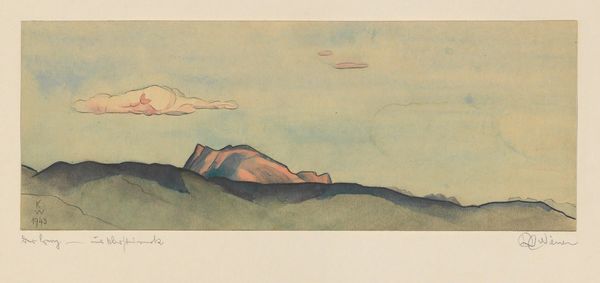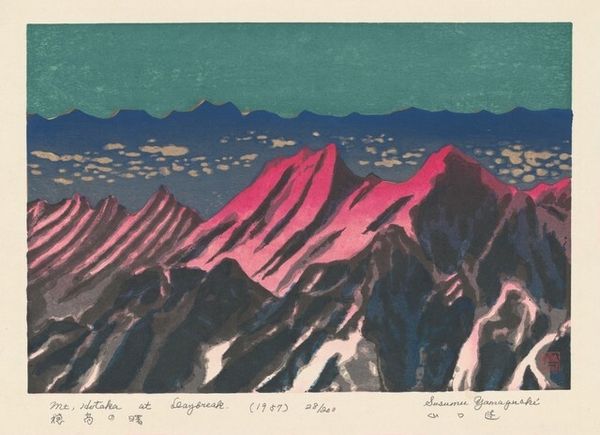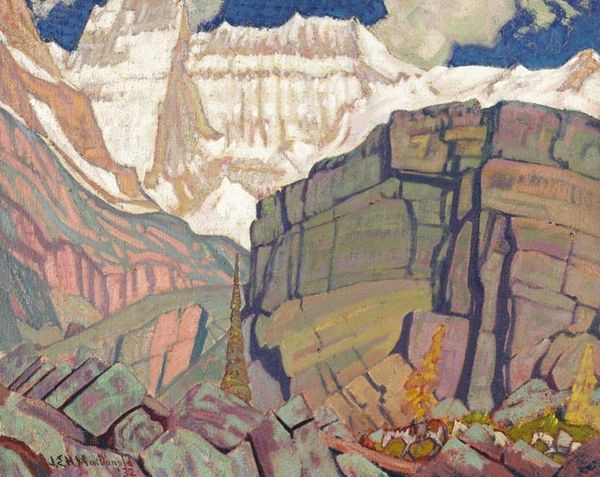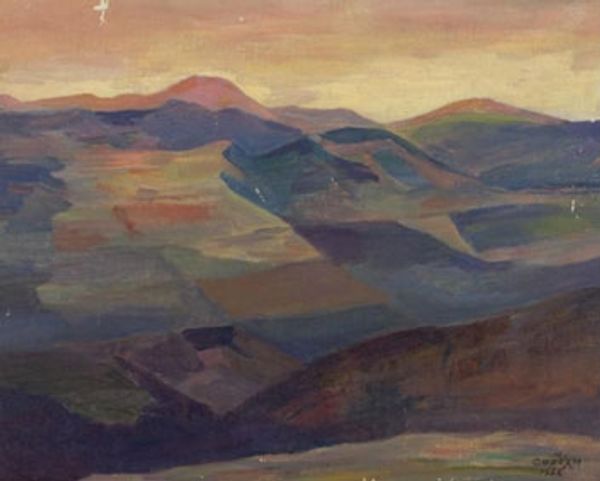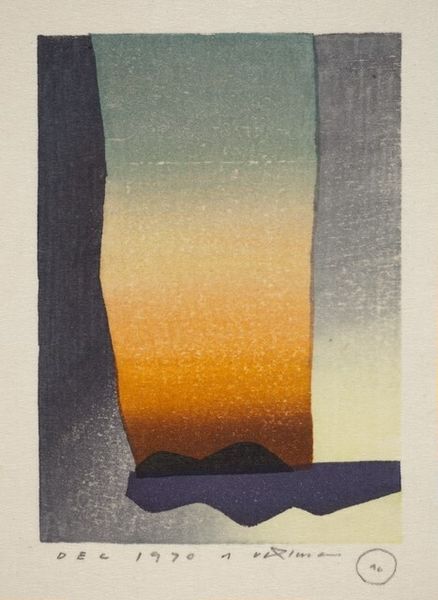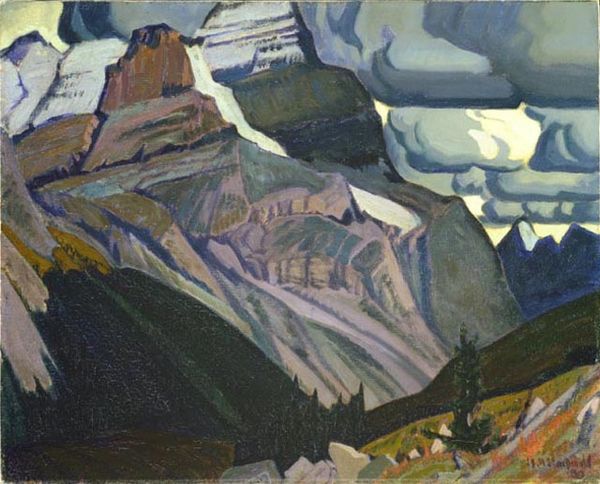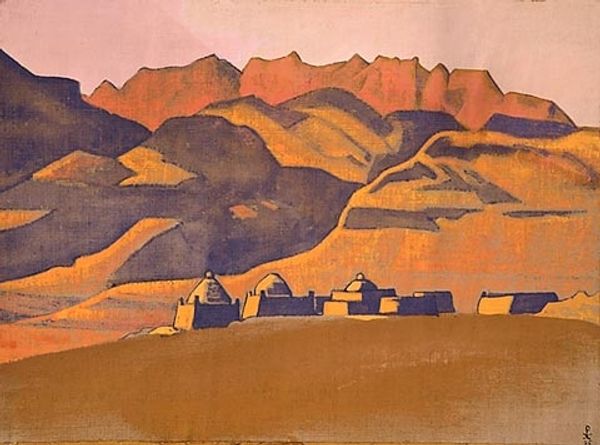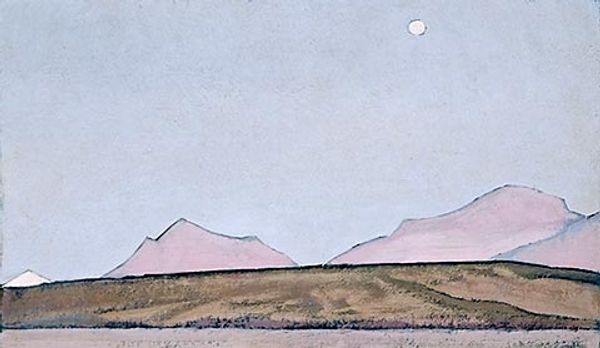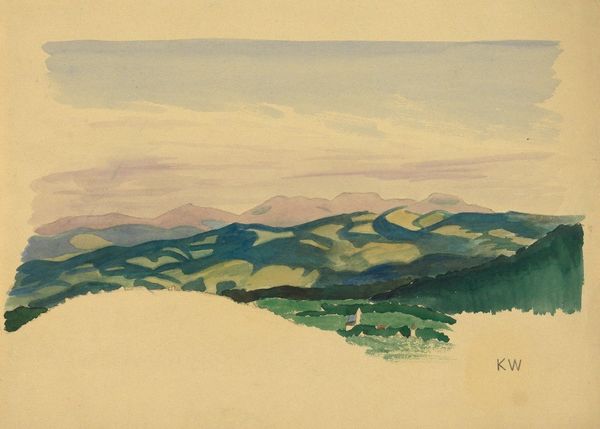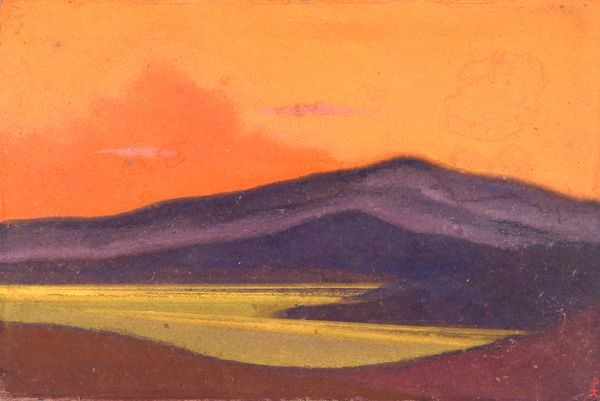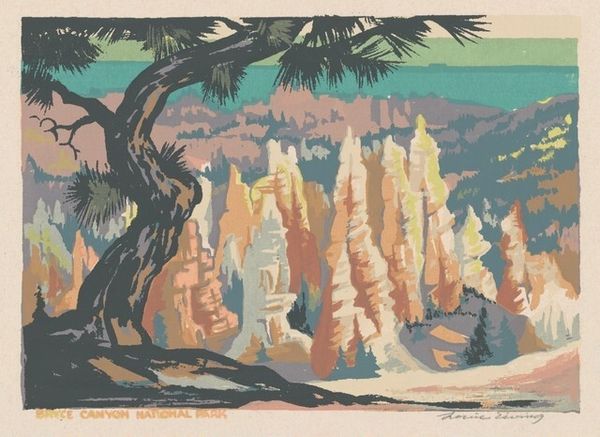
# print
#
landscape
#
caricature
#
naive art
#
abstraction
Dimensions: image: 11.91 × 16.99 cm (4 11/16 × 6 11/16 in.) sheet: 14.61 × 20.32 cm (5 3/4 × 8 in.)
Copyright: National Gallery of Art: CC0 1.0
Editor: This is "Grand Canyon", a print made by Louie H. Ewing around the 1940s. I’m struck by its stylized simplification of a landscape, almost bordering on abstraction. What aspects of its visual composition stand out to you? Curator: The colour palette is particularly interesting. Note how the artist employs a limited range of tones— muted blues, greens, and pinks — to create a harmonious, if somewhat unreal, portrayal. Consider, too, the use of flattened forms. How does this contribute to our perception of space within the artwork? Editor: I think it makes the vastness of the Grand Canyon seem almost contained, like a series of stacked blocks. The sharp delineation of the shadows also creates a sense of depth, even if it is somewhat artificial. Curator: Precisely. The sharp, unwavering lines outlining each form underscore the two-dimensionality, working against a complete illusion of depth. We can almost "read" the landscape as a sequence of flat shapes arranged upon a single plane. How do the shapes contribute to a sense of order? Editor: Well, there’s a clear structure with horizontal bands creating the sky, the canyon walls, and the treeline. I guess, the composition offers us a structured interpretation of nature. Curator: Yes, note how the structure prioritizes order over realistic representation. Consider how the use of color and geometric simplification come together to achieve something unique and thought-provoking, don't you agree? Editor: Absolutely! I hadn’t considered how the interplay between flattened forms and colour contribute to the unique perspective of this landscape.
Comments
No comments
Be the first to comment and join the conversation on the ultimate creative platform.

